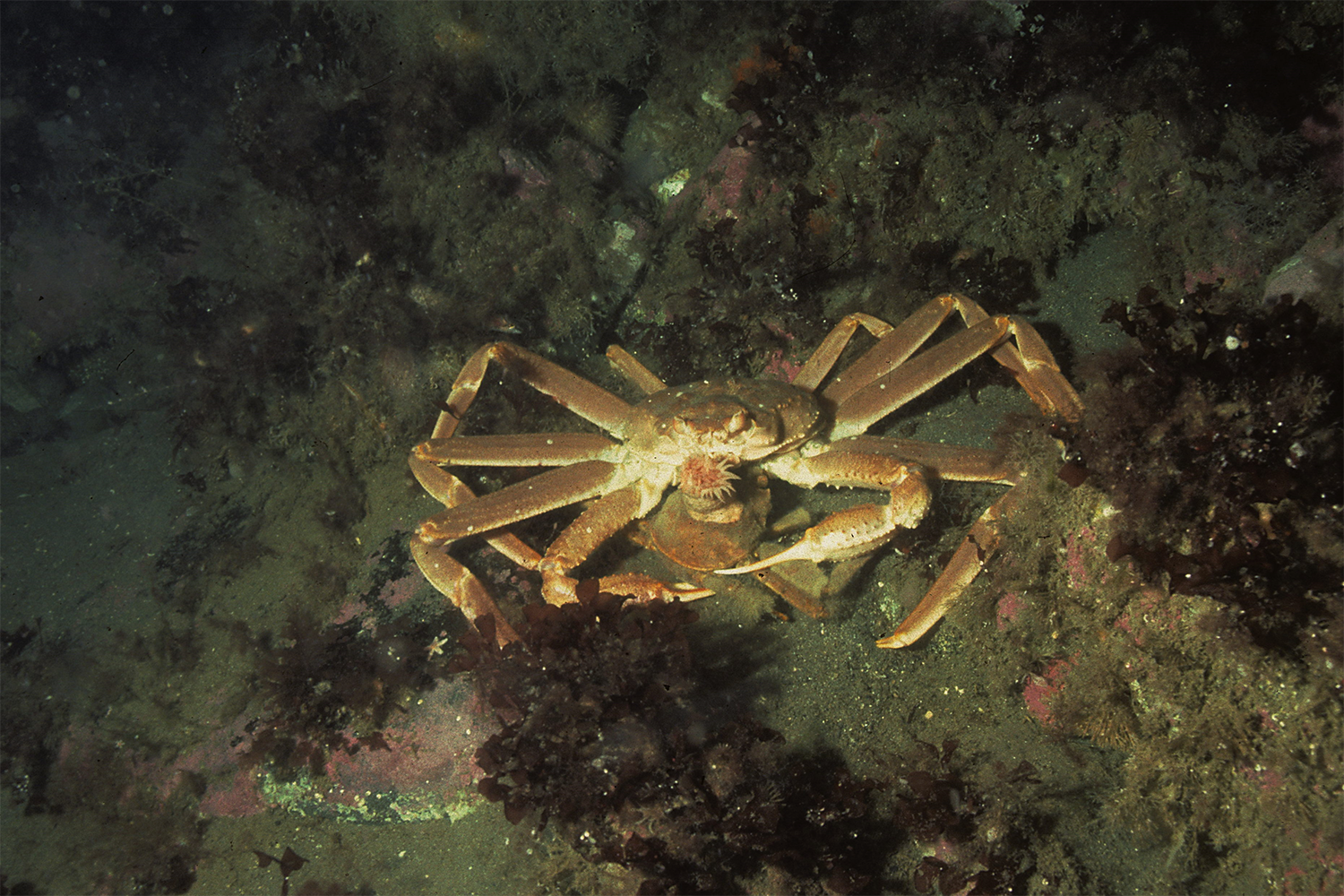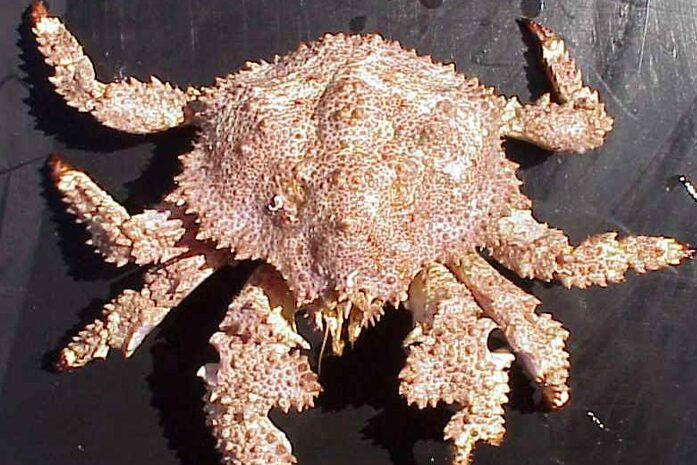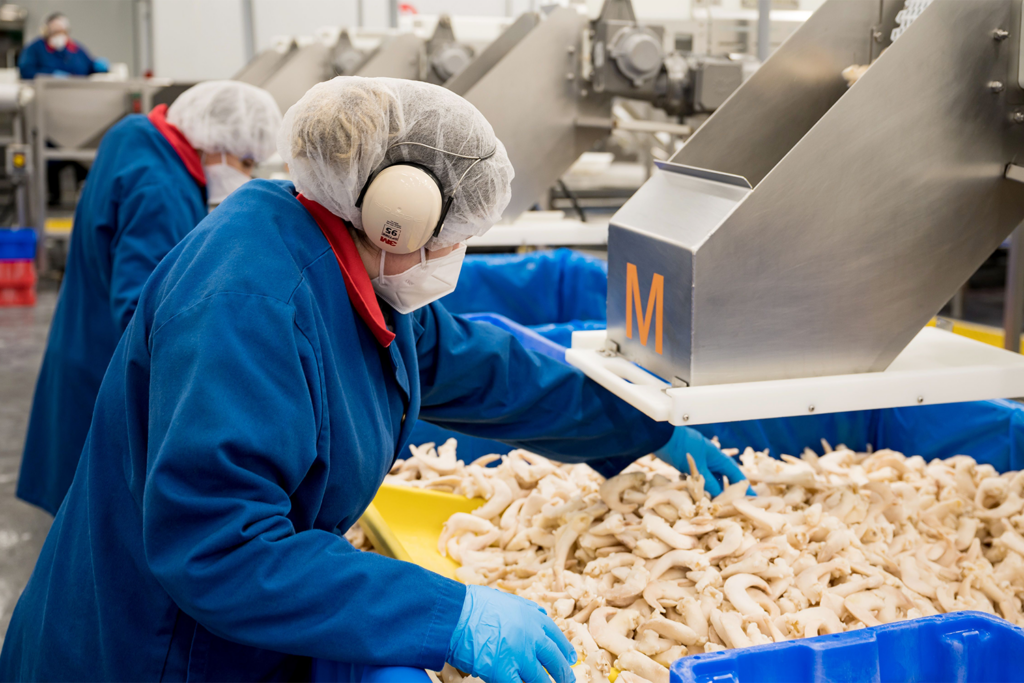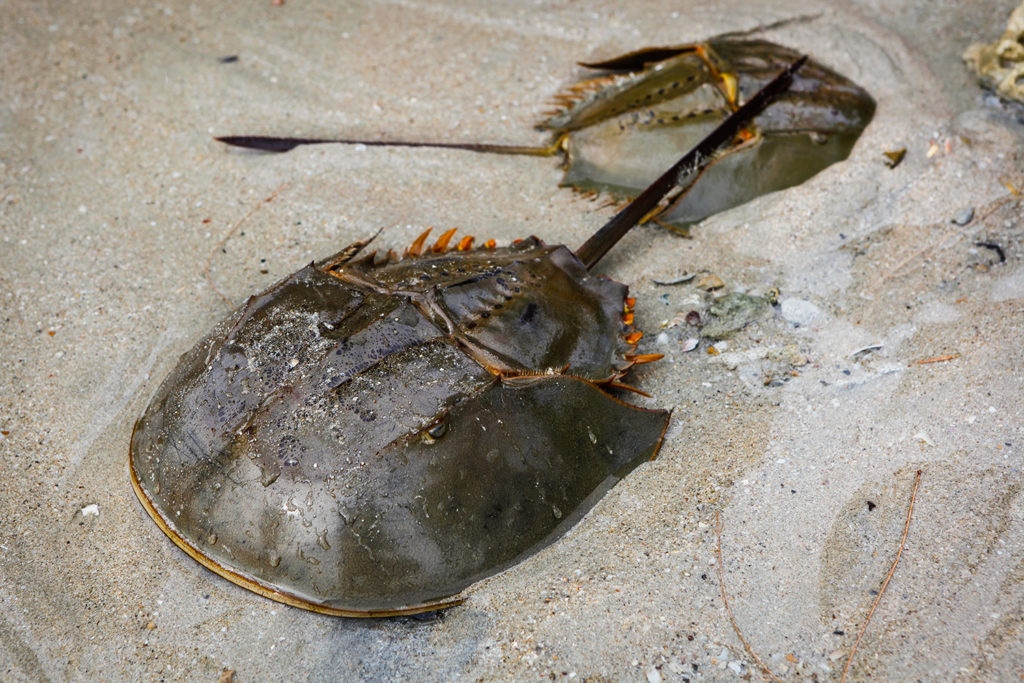Self-baited ghost pots with dead conspecifics had significantly lower fishing efficiency compared to actively fished, baited pots, resulting in very low catch rates

Pots and traps are among the most abundant fishing gear types contributing to abandoned, lost or otherwise discarded fishing gear (ALDFG) in different fisheries. Such gear often is made as a durable structure consisting of a frame often covered with netting that is made of slowly degrading plastic materials, for example polyethylene, polyamide and polyester. This fishing gear type is believed to pose high ecological and economic impacts through potential to continue capturing marine animals when left at sea unattended, so-called “ghost fishing.” The capture principle in pots relies on animals approaching the pot based on the odor of the bait with limited subsequent escape depending on gear design.
Ghost fishing implies that the ALDFG continues capturing target and non-target animals in cases when pots are lost, abandoned or discarded at sea negatively affecting biological conservation. This process can continue for long time after the gear has been lost at sea, in some instances potentially lasting up to several years. Furthermore, in case of ghost fishing in pots, it is believed that the rates of capture by ALDFG can be significantly affected over time due to mortality of entrapped ghost-fished animals. This in the literature is called “self-baiting” of such ghost fishing gear.
Mortalities caused by ALDFG can have a negative effect on the marine environment, conservation and sustainable management of commercial fisheries and negatively affect efficiency of commercial fisheries. One such large-scale example of pot fisheries targets the snow crab (Chionoecetes opilio); these fisheries are exploited in Arctic areas, including in Canada, U.S., Greenland, Russia and Norway; often carried out in harsh weather conditions and deep areas partly covered with pack-ice, which increases the risk of gear loss.
This article – summarized from the original publication (Cerbule, K. et al. 2024. Ghost fishing by self-baited lost, abandoned or discarded pots in snow crab (Chionoecetes opilio) fishery. Journal for Nature Conservation Volume 82, December 2024, 126764) – discusses a study to estimate self-baited snow crab pot ghost fishing efficiency compared to the catch efficiency of actively fished baited pots as used in commercial snow crab fishery in the Barents Sea.
Study setup
To investigate the self-baiting effect in ghost fishing of snow crab, this study applied similar experimental design and analysis methods as in Cerbule et al. Test pots were baited with one target-sized (> 95 mm CW) dead snow crab to simulate mortality of a captured snow crab in lost pots. The snow crab samples for test pots were collected during previous research trials in the Barents Sea following commercial fishing practice. Snow crab samples were frozen as whole animals directly after capture and kept packed and frozen until used. We used small-mesh netting with nominal mesh size of 52 mm in both test and baseline pots to retain snow crabs of all sizes.
A triplet experimental design was used, involving pot deployment using three parallelly deployed mainlines where each contains a single pot configuration (either test or baseline gear). The two outer mainlines contain the same configuration (both being either test or baseline gear). When using the triplet design, it is expected that the snow crab abundance available for the middle line approximates the mean of the two outer fishing lines based on simple linear interpolation. Thus, the catch comparison is made between the middle and outer lines, which should reduce the risk for bias due to potential variation in snow crab abundance.
For detailed information on the experimental design, equipment used, deployment, and data collection and analyses, refer to the original publication.

Results and discussion
We investigated how ghost fishing can affect the marine environment and sustainable marine resource conservation by examining ghost fishing by self-baited pots. The results showed that self-baited pots with dead conspecifics had significantly lower ghost fishing efficiency when compared to the catch efficiency of actively fished baited pots, resulting in very low catch rates.
For the target sized snow crabs above 95 mm carapace width (CW), self-baited pots captured only 0.4 percent of crabs compared to actively fished baited pots. The results regarding entry efficiency by undersized snow crab showed a slightly higher catch rate of 2.2 percent compared to actively fished pots. Ghost fishing implies that the animals that enter or otherwise contact ALDFG (i.e., trap or pot) are unable to subsequently escape. In case of undersized snow crabs, such individuals when entering commercial snow crab pots would most probably be able to escape through meshes of the pot netting which in commercial fishery are made of sufficient size to allow the escape of small individuals. For example, snow crab pots used by Norwegian vessels are built with 120–140 mm mesh netting. Thus, entry of small crabs in such pots would not further contribute to ghost fishing catches while the opposite would be expected for larger individuals.
Several studies have emphasized that pots and traps could have a high negative impact on marine environment and resource conservation when ghost fishing is considered due to potential of self-baiting. Self-baiting includes attraction of cannibalistic target species towards pots of dead conspecifics such as in snow crab pot fisheries where bycatches of species other than snow crab are not common throughout the different areas where these pot fisheries are being conducted. Crabs are often cannibalistic species that also feed upon dead or dying conspecifics. This could suggest that self-baiting in such fisheries could increase ghost fishing rates (i.e., above the estimated 8 percent compared to baited actively fished pots.

The effect of presence of both live animals and dead snow crabs in pots regarding ghost fishing efficiency is unknown, and the time until pots are empty (i.e., all pots contain no snow crab) can take several months. The present study combined with previous results on initial ghost fishing efficiency demonstrated that snow crab can be repelled from pots with dead conspecifics, implying that subsequent mortality of ghost fished snow crab could for a period reduce ghost fishing efficiency, eventually leading to empty gear due to depletion of dead crabs. This, however, could again increase the ghost fishing cycle in empty pots.
The results suggest that snow crab, similar to other crab species, may be repelled from odor of dead conspecifics as the observations showed low ghost fishing risk in self-baited pots. This could indicate avoidance behavior due to potential danger. These results imply that self-baiting by dead snow crabs in these fisheries would not increase the ghost fishing risk in lost pots. However, lost pots still could cause considerable risk to the marine environment and conservation. Specifically, decay of dead individuals in pots would imply that more crabs could again be attracted to these pots, either due to seeking shelter, due to random movements, or due to being attracted to live conspecifics in the gear. Moreover, it is also important to note that functionally both empty pots and self-baiting pots should be considered under ALDFG since snow crab entrance in empty gear can result in self-baited pots.
Fisheries in Focus: How the mystery of the great eastern Bering Sea snow crab die-off was solved
The precise number of pots being lost at sea in Barents Sea snow crab fishery is unknown. However, considering the information from lost gear retrieval operations and accidental snow crab pot retrieval during other fishing operations, this amount can be considerable. Considering the large numbers of pots lost in different fisheries targeting snow crab in the Arctic and the fact that such gear can continue fishing for long periods (i.e., before breaking down to a state where snow crab of all sizes can escape the gear), the effect on the marine environment and unaccounted snow crab mortality can be considerable.
ALDFG in the snow crab fishery is causing complex challenges for fisheries sustainability and marine environment. Due to the same target species and fishing gear type used, similar results as presented here would also apply to other snow crab fisheries. A similar approach can be used when estimating ghost fishing and associated self-baiting risk in other pot fisheries and for other species as the effect of self-baiting can vary between species. Furthermore, in other pot fisheries, self-baiting can include other bycatch species, thus not being limited mainly to conspecifics such as in snow crab fisheries. Therefore, the effect of self-baiting on ghost fishing efficiency should be estimated in other fisheries to have a broader overview of the implications of ghost fishing in different pot fisheries.
The present study showed that ghost fishing in snow crab pots can have varying efficiency over the time pots are exposed to ghost fishing. These factors would be important to consider when further discussing risk posed by ALDFG in this pot fishery regarding both, effect on the marine environment, conservation and management of commercial fisheries due to unaccounted mortality. The environmental challenges of snow crab pots that lead to ghost fishing and gear conflicts are issues that have been a major challenge in economically important snow crab fishery challenging sustainable use of marine resources.
Perspectives
The results in this study should be interpreted with caution as they are based on a limited number of pot deployments during one fishing season. The limited number of pot deployments and the amount of crab captured leads to uncertainties in the ghost fishing estimations. However, such uncertainties are reflected in the confidence intervals provided with the results. As long as these confidence intervals are considered when interpreting the results, the limited number of pot deployments used in this study should not affect the results. Furthermore, the time of the year and the area in which the experiments were conducted represent typical conditions for the snow crab fishery. Therefore, we consider that our results are representative of a comparable snow crab fishery in the region.
Now that you've reached the end of the article ...
… please consider supporting GSA’s mission to advance responsible seafood practices through education, advocacy and third-party assurances. The Advocate aims to document the evolution of responsible seafood practices and share the expansive knowledge of our vast network of contributors.
By becoming a Global Seafood Alliance member, you’re ensuring that all of the pre-competitive work we do through member benefits, resources and events can continue. Individual membership costs just $50 a year.
Not a GSA member? Join us.
Author
-
Kristine Cerbule, M.S.
Corresponding author
UiT The Arctic University of Norway, Tromsø, Norway; and Department of Fisheries Technology, SINTEF Ocean, Trondheim, Norway
Related Posts

Fisheries
Experimental fishery program to examine the reproductive capacity of southern California brown box crabs
Findings provide information on the reproductive capacity of brown box crabs, needed for evaluating the feasibility of a targeted fishery.

Fisheries
Acoustic telemetry used to track marine fisheries migrations
A new study uses acoustic telemetry to track aquatic species’ migrations, providing vital data for fisheries and marine conservation.

Responsibility
‘Building towards abundance’: How Indigenous-owned Clearwater Seafoods is reshaping Canada’s seafood industry
The Mi’kmaq Coalition’s 50 percent acquisition of Clearwater Seafoods is transforming Canada’s seafood industry and promoting responsible fisheries.

Health & Welfare
Can farming horseshoe crabs help the COVID-19 cause?
Already housing horseshoe crabs for medical purposes, researchers hope recirculating aquaculture systems will aid their coronavirus-fighting efforts.



